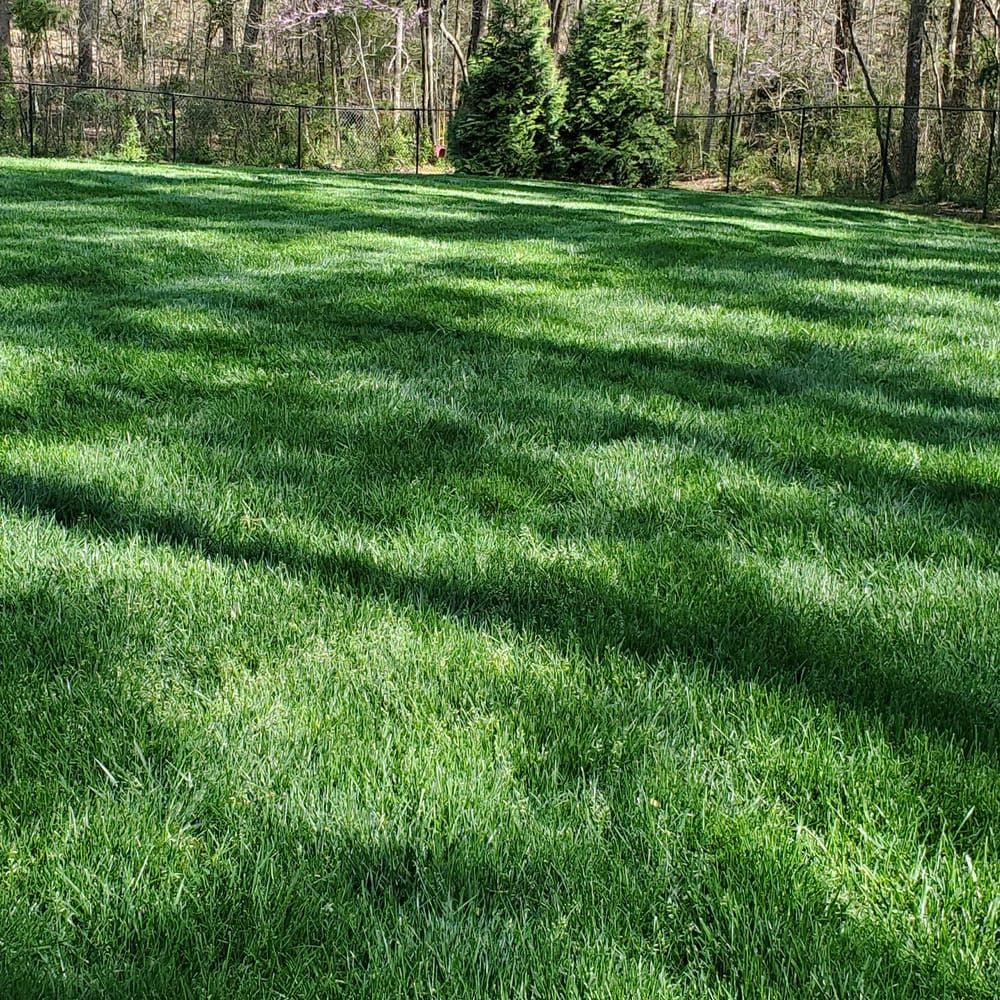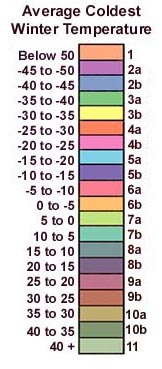
Kentucky Bluegrass - Midnight
- Dark Green Color
- Lawns
- Cost Efficient
Grasses used in Iowa generally consist of bluegrass or bluegrass mixtures.
Cool-Season Grasses:
Kentucky bluegrass - This is the most popular turfgrass of all cool-season grasses in the upper Midwest region. Its attributes are a nice medium leaf texture, dark green color, aggressive spreading growth habit, and pretty good tolerance to most environmental conditions except shade. There are hundreds of different cultivars of Kentucky bluegrass to choose from, some being selected for more shade tolerance, ability to take a lower mowing height, more disease or drought tolerance, and preferred texture or color of the leaf. It is best to blend three or four different Kentucky bluegrass cultivars together to maximize the desirable traits of each and to mask any undesirable traits.
Perennial ryegrass - This turf is a bunch-type turf that does not have the ability to spread like Kentucky bluegrass. It is also a shorter lived perennial in our climate thus it should be overseeded every few years if planted in a monostand. Its attributes are a very rapid establishment rate, nice medium leaf texture, good color, and high wear resistance. Perennial ryegrass is useful in mixtures with Kentucky bluegrass to control erosion until the Kentucky bluegrass can get established.
Fine fescues - This is the most shade tolerant of the cool-season turfgrasses. Consequently fine fescues are popular in shade seed mixtures with other turfgrass, especially Kentucky bluegrass. Fine fescues also require less fertilizer and irrigation than most other cool-season turfs. However, it is less wear tolerant than most other cool-season turfs. Red fescue is the most widely used of the fine fescues since it is the only one that spreads by rhizomes although not very aggressively. The other fine fescues; sheeps, hard, and chewings are strictly bunch grasses. A blend of several of the fine fescues is sometimes marketed under such names as "No-Mow" or "Carefree." Contrary to the name this turf should be mowed every several weeks to maintain a dense stand of grass. Unmowed it will attain a height of 12 - 14 inches and thin out or die after a few years.
Tall fescue - Turf Type - This is more of a utility grass with a little wider leaf blade than other cool season turfs. Many of the new cultivars look finer and more desirable. Many varieties are non-spreading bunch-type grass that may need overseeding to keep a dense appearance. New turf type fescue are rhizomatous like bluegrass and will help maintain a dense turf. The attributes of tall fescue are it's good drought, wear and salt tolerance. It also has pretty good heat and shade tolerance.
| Click Name To View Grass Seed Choice | Type | Applications | |
|---|---|---|---|
| Cool Season Mix - Showtime |
|
Cool Season |
Lawns - Full Sun to Moderate Shade Rye, Kentucky Bluegrass, Fine Fescue Mix |
| Cool Season Mix - Garland |
|
Cool Season |
Lawns - Full Sun to Moderate Shade Rye, Fine Fescue Mix |
| Fescue/Bluegrass Mix - Combat Extreme North |
|
Cool Season | Lawns - Wear Tolerant |
| Fescue Blend - Combat Extreme Transition |
|
Cool Season | Lawns - Wear Tolerant |
| Fine Fescue Blend - Legacy |
|
Cool Season | Lawns - Full Sun To Moderate Shade |
| Kentucky Bluegrass - Bluegrass Supreme |
|
Cool Season | Lawns - Golf Gourses - Full Sun |
| Kentucky Bluegrass - Midnight |
|
Cool Season | Lawns - Golf Courses - Full Sun |
| OSP Ryegrass |
|
Cool Season | Lawns - Golf Courses |
| Shade Grass - Poa Supina Mix |
|
Cool Season | Lawns - Full Sun - Deep Shade - Best Shade Grass |

Below is the USDA Zone Map for Iowa so you can determine which zone you reside in. Below that are our picks for your state which will do best in your area. Next on this page are tables which list various grasses and their characteristics so you can compare before you decide on your purchase. Click on the product name (ie. Midnight) for more information about that grass and to make your purchase.
| USDA Zone Map For Iowa | |
|---|---|
 |
 |
| Compare Various Grasses For Their Characteristics | ||||||||
|---|---|---|---|---|---|---|---|---|
| Cool Season Grasses |
Leaf Texture |
Establish Rate |
Nitrogen Use |
Water Use |
Drought Tolerance |
Salinity Tolerance |
Shade Tolerance |
|
| Bentgrass - Creeping | Fine | Moderate to Fast |
Low to Moderate |
High | Poor to Moderate |
High | Poor to Moderate |
|
| Bentgrass - Colonial | Fine | Moderate to Fast |
Low | Moderate | Poor to Moderate |
Moderate | Moderate | |
| Bluegrass - Kentucky | Moderate to Fine |
Slow | Moderate to High |
Moderate to High |
Good | Moderate | Poor | |
| Bluegrass - Rough | Moderate to Fine |
Slow | Moderate to High |
Moderate to High |
Poor | Moderate | Excellent | |
| Fescue - Hard | Fine | Slow to Moderate |
Low to Very Low |
Moderate | Excellent | Low to Moderate |
Excellent | |
| Fescue - Creeping | Fine | Moderate | Low to Moderate |
Moderate | Good | Low | Excellent | |
| Fescue - Turf Type | Moderate to Coarse |
Moderate | Moderate to High |
Low to Moderate |
Excellent | Low | Good to Excellent |
|
| Ryegrass - Perennial | Fine to Moderate |
Very Fast | Moderate to High |
Moderate to High |
Good | Poor to Moderate |
Poor to Moderate |
|
| Compare Various Grasses For Their Characteristics - Continued | ||||||||
|---|---|---|---|---|---|---|---|---|
| Cool Season Grasses |
Fertility Needs |
Wear Resistance |
Mowing Height |
Cold Tolerance |
Acid Soil Tolerance |
Thatching Tendency |
Heat Tolerance |
|
| Bentgrass - Creeping | High | Low | Low | Low | Medium to High |
High | High | |
| Bentgrass - Colonial | High | Low | Low | Low | Medium to High |
High | High | |
| Bluegrass - Kentucky | Medium | Medium to High |
Medium | High | Medium | Medium | Medium | |
| Bluegrass - Rough | Medium | Medium | Medium | High | Medium | Medium | Medium | |
| Fescue - Hard | Low | Low | Medium | Medium to High |
Medium to High |
Low to Medium |
Low to Medium |
|
| Fescue - Creeping | Low | Low | Medium | High | Medium to High |
Low to Medium |
Low to Medium |
|
| Ryegrass - Perennial | Medium | High | Low to Medium |
Medium | Medium | Low | Medium to High |
|